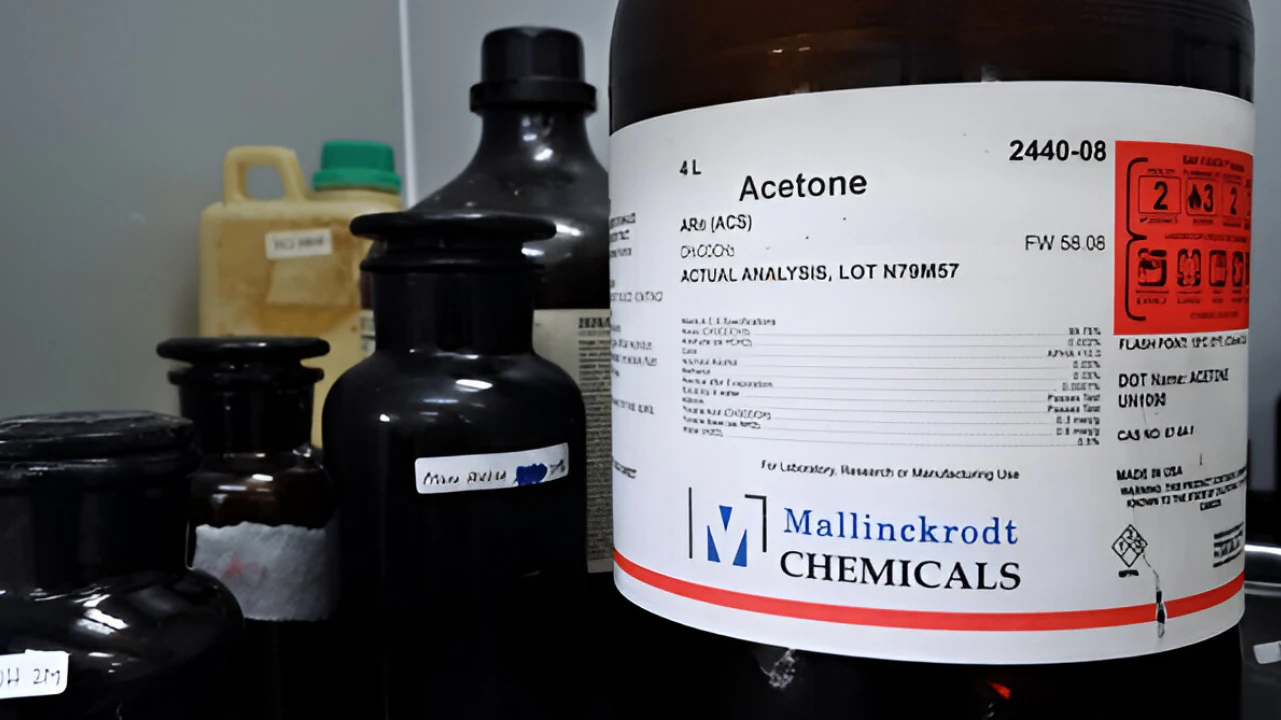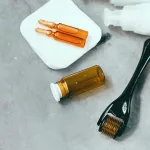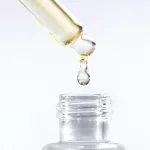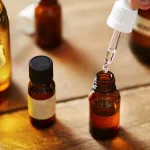Have you ever stood before your best glass jar, trying to clean off the persistent sticker, and noticed the paint on your metal tools? Have you been thinking about acetone as a cleaner but do not know what it is or how to use it? I understand, and you are not the only one. This text will help you find the answers to the mysteries of a very powerful solvent that but still remains eco-friendly. Well, you’re not alone, and I’m here to help unravel the mysteries of this powerful solvent.
Acetone is a colorless and inflammable solvent that is usually found in nail polish removers and paint thinners, it acts as a liquid chemical. It is well known for its high-powered ability to dissolve various substances which makes it the first option for different natural cleaning duties. Despite its many uses, it is necessary to know both the good and the bad of the product.
In this article, we will clearly explain what acetone is, what it is widely used for, what protection measures should be considered, and what the influence on the environment is. If you are a person who is fond of doing it yourself, a cleaning professional or simply a person who needs to get a very tough stain out, this comprehensive guide shall provide you with complete know-how on how to use acetone safely and in an eco-friendly way.
Hence, let’s put the steps of the cleaning process into action!
What Exactly Is Acetone?

Alright, let’s start with the basics—what on earth is acetone, really? You’ve probably smelled it before (that sharp, sweet-ish scent from nail polish remover), but what’s behind the smell and the sparkle it brings to cleaning?
Is Acetone Natural or Synthetic?
Believe it or not, acetone is both naturally occurring and synthetically produced. Yup! Our own bodies actually produce small amounts of it when we break down fat. It’s also found in trees, plants, and even volcanic gases. But the acetone we typically use for cleaning? That one’s made in labs—engineered for purity and performance.
What Does It Look, Smell, and Feel Like?
Imagine this: a clear, watery liquid with a sharp scent that can hit hard if you’re not familiar with it. It dries in a flash, feels chilly when it hits your skin, and vanishes without a trace—ideal when you need something to dry fast and leave nothing behind.
Brief Chemical Profile and Properties
In chemistry speak, acetone is known as propanone, a type of ketone. It’s highly volatile (meaning it turns into gas fast), flammable, and a mighty solvent. It’s amazing at breaking down fats, oils, adhesives, paints—you name it.
Common Products That Contain Acetone
Even if you’ve never bought a bottle of pure acetone, chances are you’ve used it. Here’s where it hides:
- Nail polish remover (obviously!)
- Paint and lacquer thinners
- Adhesive removers
- Household degreasers
- Some types of cleaning wipes and sprays
It’s like the undercover agent of the cleaning world—quietly doing its job without asking for the spotlight.
Why Do People Use Acetone for Cleaning?
So, why is acetone such a cleaning MVP? Well, it’s all about what it can do—and believe me, it can do a lot. From greasy messes to stubborn stickers, acetone’s got your back.
What Surfaces or Stains Does Acetone Work Best On?
Think of acetone like a specialist—it’s amazing at certain things, not so great at others. It shines when it comes to removing:
- Sticky residues (like price tags or tape marks)
- Oil-based paint splatters
- Ink stains
- Grease and oils on metal tools
- Leftover adhesive from labels or glue
But heads-up—it’s not your everyday all-purpose cleaner. Acetone is a bit of a diva. Put it on plastic or certain fabrics and it might just melt or discolor them. Always test on a hidden area first!
Can Acetone Remove Paint, Adhesives, or Oils Effectively?
Short answer? Heck yes. It’s practically famous for this. Whether you’ve got dried-up nail glue on your fingers or oil-based paint on your metal ladder, acetone breaks it down fast. No scrubbing for hours, just a swipe and wipe (okay, maybe a little elbow grease for the really stubborn stuff).
Real-World Examples: Home, Industrial, and Beauty Applications
Let’s make it real for a sec. Say you’re doing a home renovation and spill some varnish on your tile floor—acetone can swoop in like a hero. Or maybe you’re a crafter trying to clean dried glue off scissors. Acetone again. And of course, in beauty? It’s the only thing standing between your gel manicure and a clean slate.
Comparison Table: Acetone vs. Other Common Solvents
| Solvent | Best For | Dry Time | Safe on Plastics? |
|---|---|---|---|
| Acetone | Paints, adhesives, oils | Very fast | No |
| Rubbing Alcohol (Isopropyl) | Disinfecting, light oils | Moderate | Yes |
| Mineral Spirits | Paint thinning, cleaning brushes | Slow | Yes |
| White Vinegar | Hard water stains, general cleaning | Moderate | Yes |
As you can see, acetone is the speedster of the bunch—but also the most aggressive. Handle with care!
How to Use Acetone Safely

Alright, acetone packs a punch—but hey, with serious cleaning power comes serious responsibility, right? As tempting as it is to treat it like your go-to miracle juice, it’s best to play it safe and stick to a few smart precautions to keep everything cool and chaos-free.
The Must-Know Dos and Don’ts of Using Acetone
Let’s break it down—here are the absolute musts and the major no-nos:
- ✅ DO use it in a well-ventilated space. It evaporates super fast, and those fumes? Not your friend in a closed room.
- ✅ DO wear gloves. Acetone can dry out your skin or cause irritation if you’re using it a lot.
- ✅ DO keep it away from open flames. It’s extremely flammable. (Seriously, no candles nearby, okay?)
- ❌ DON’T use it on plastic unless you’ve tested it. Acetone can melt or warp it—think of it like plastic kryptonite.
- ❌ DON’T mix it with other chemicals unless you know exactly what you’re doing. Acetone + unknowns = unpredictable reactions.
Are There Materials Acetone Should Never Be Used On?
Yes, and this one’s super important. Acetone doesn’t play nice with:
- Plastic (especially polystyrene and PVC)
- Painted surfaces (unless you’re trying to remove the paint)
- Varnished or sealed wood
- Delicate fabrics
Think of acetone as a tough love kind of cleaner—it’s there for the big jobs, not the dainty ones.
Safety Gear and Ventilation Tips
No need to equipment up like you’re taking walks right into a hazmat scene, however a few simple precautions could make a massive difference:
- Slip on chemical-resistant gloves (go with nitrile—acetone eats via latex like sweet).
- Crack open a few home windows, stir up a fan, or higher yet, take it outside.
- If you’re going heavy-responsibility, consider carrying a masks that’s rated for organic vapors.
- Always seal the bottle tight while you’re executed—no one wants lingering fumes striking round.
Step-via-Step Guide to Cleaning with Acetone
Here’s a simple game plan for safe and effective cleaning:
- Test a small, hidden spot first—just to make sure it won’t damage the material.
- Put on your gloves and make sure the room has airflow.
- Pour a little acetone onto a clean cloth or cotton ball. Don’t drench it—less is more.
- Gently rub the stained or sticky area. You’ll usually see results in seconds.
- Wipe the area with a damp cloth to remove any residue.
- Let it dry naturally and wash your hands afterward—even if you wore gloves!
And voila—you just handled acetone like a pro!
Risks and Health Concerns

Alright, we’ve been hyping up acetone a bit—but let’s hit pause and look at the flip side. As handy as it is, this isn’t something to mess with lightly, especially when your health’s on the line.
Is Acetone Toxic to Inhale or Touch?
Short answer: with good ventilation and in small amounts, it’s generally safe. Acetone’s been studied a ton, and the CDC even points out that our bodies naturally process it. Still, breathing in too much or repeated exposure can lead to irritation, dizziness, headaches—and yeah, that’s no fun.
Touching small amounts occasionally? Usually no big deal. But soaking your skin in it or breathing in those fumes for too long? Not a good idea.
What Are the Long-Term Effects of Frequent Exposure?
Here’s where things get real. If you work in a salon or do a lot of painting or industrial cleaning, constant exposure without protection can lead to:
- Skin dryness or cracking (yep, it strips natural oils like a champ)
- Eye and respiratory irritation
- Nervous system symptoms like fatigue or confusion (from long-term, high-level inhalation)
These risks are typically associated with industrial settings or really heavy home use without safeguards, but it’s still something to keep in mind.
Symptoms of Acetone Exposure and What to Do
If you accidentally overdo it, here’s what to watch for:
- Lightheadedness or dizziness
- Nausea
- Burning eyes or throat
- Red, itchy, or dry skin
Feeling any of the above? Step outside, breathe in some fresh air, wash the area with gentle soap and water, and drink some water to flush your system. If symptoms persist or are severe, don’t hesitate—reach out to a medical professional.
Regulatory and Safety Guidelines (OSHA, EPA, etc.)
The good news is that agencies like OSHA and the EPA keep a close eye on acetone. They set strict exposure limits and offer guidelines to keep workers safe. Following their recommendations (like wearing gloves and using it in ventilated areas) will keep you well within the safety zone.
Bottom line? Acetone isn’t something to fear, but it definitely deserves your respect. Use it wisely, treat it carefully, and you’ll avoid the common pitfalls that come with misuse.
Environmental Impact of Acetone
Now, if you’re someone who cares about what goes down the drain—and I know you are—this part’s for you. Because while acetone might seem like it just disappears into thin air (which, spoiler alert, it kind of does), it still has an environmental footprint we should talk about.
Is Acetone Biodegradable or Harmful to the Environment?
Surprisingly, acetone is actually considered biodegradable. In small, typical household quantities, it tends to break down quickly in the air and water. That’s part of why regulatory bodies like the National Institutes of Health and others don’t classify it as a major environmental hazard under normal use.
But—and this is important—just because something breaks down doesn’t mean we should pour it freely into sinks or toss it into the soil. When dumped in large amounts or disposed of improperly, acetone can still harm aquatic life or contaminate water sources.
How Should Acetone Waste Be Disposed of Properly?
Let’s break it down into friendly do’s and don’ts:
- ✅ DO absorb small amounts (like from cleaning cotton) with paper towels and dispose of them in sealed, fire-safe containers.
- ✅ DO bring large quantities of used acetone to a local hazardous waste collection center (check your city’s website—they usually have schedules).
- ❌ DON’T pour leftover acetone down the drain, onto the ground, or into your regular trash bin.
Simple steps like these make a huge difference, especially when we’re all doing our part. If you’re someone who uses acetone often (artists, salon pros, tinkerers—looking at you!), having a dedicated disposal method can keep things both clean and green.
Eco-Friendly Alternatives for Cleaning
If acetone feels a bit too intense or you’re looking to be extra eco-conscious, good news—there are gentler options out there. Depending on the job, you could try:
- Lemon essential oil: Great for removing sticky labels and smells divine.
- White vinegar: A classic for cutting grease and general cleaning.
- Rubbing alcohol (isopropyl): Milder than acetone but still pretty effective for many surfaces.
- Commercial “green” solvents: Just make sure to read the labels—they’re not all created equal!
Remember, there’s no shame in using acetone where it makes sense—but balancing it with environmentally friendly habits is how we stay responsible and resourceful at the same time.
Balancing Benefits with Risks: Should You Use Acetone?
So now that we’ve looked at what acetone is, what it can do, and the safety and environmental angles… here comes the big question: Should you actually use it?
The answer isn’t a simple yes or no—it really depends on your needs, your habits, and how comfortable you are using a strong solvent. Think of acetone like that intense but super helpful friend—awesome in a pinch, but not someone you want to lean on for every little thing.
When Is Acetone the Best Choice?
Acetone is a rock star when it comes to:
- Removing tough adhesives, super glue, and dried paint
- Cleaning tools and metal surfaces
- Dissolving oily or greasy messes
- Prepping surfaces for painting or refinishing
If you’re dealing with one of these situations and you’ve taken the safety steps seriously—ventilation, gloves, careful application—then go ahead. Acetone is your fast-track solution.
When Should You Avoid It or Look for Alternatives?
But acetone’s not always the right tool for the job. You might want to skip it if:
- You’re cleaning something delicate, like plastic, varnished wood, or fabric
- You have pets or kids around (the fumes aren’t friendly)
- You’re looking for a greener or gentler solution for everyday messes
In these cases, something like vinegar, dish soap, or even just hot water and elbow grease might be safer and more than enough.
Summary Chart of Pros and Cons
| Pros | Cons |
|---|---|
| Fast and effective cleaner | Strong fumes, flammable |
| Dissolves stubborn substances easily | Not safe for all materials |
| Widely available and affordable | Environmental disposal concerns |
Expert Opinions and User Testimonials
Professionals in beauty, industrial cleaning, and DIY repair work often swear by acetone. One salon owner mentioned it’s the only thing that reliably removes gel polish without harming tools. On the flip side, a hobbyist woodworker I chatted with avoids it like the plague for anything wood-related—too risky.
That’s the beauty of understanding a product like acetone—it empowers you to choose when it’s worth using and when it’s best to pass.
Conclusion: Acetone—A Handy Ally, If Used Wisely
And there you have it—our full, no-fluff dive into the world of cleaning with acetone. Whether you came here curious about how it works, concerned about safety, or just wondering if it’s the right cleaner for your next project, I hope you’re walking away feeling informed and confident.
Acetone can absolutely be your go-to solution for those especially stubborn messes. It’s fast, it’s effective, and when handled right, it’s a total cleaning champ. But like any powerful tool, it’s not something to use without a little know-how and respect. Remember to protect yourself, ventilate your space, and never be shy about choosing a gentler alternative when the situation calls for it.
At the end of the day, it’s all about balance—knowing your options and making thoughtful choices that fit your needs and values. I hope this guide helped you feel a little more empowered and a lot more prepared.
Got a success story, a question, or even a cleaning fail involving acetone? I’d love to hear it! Share your experience in the comments or reach out. And hey, if this helped you out, why not pass it along to a fellow DIY warrior or curious cleaner?
Until next time—clean smart, stay safe, and never underestimate the power of a good solvent (or a well-placed safety glove!).


















Leave a Reply
You must be logged in to post a comment.